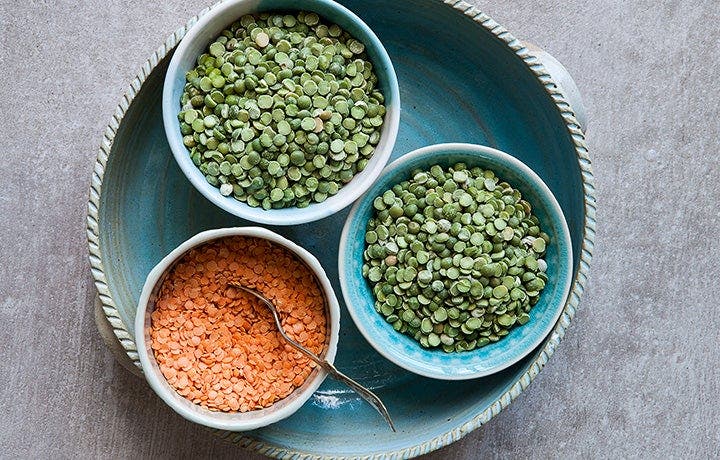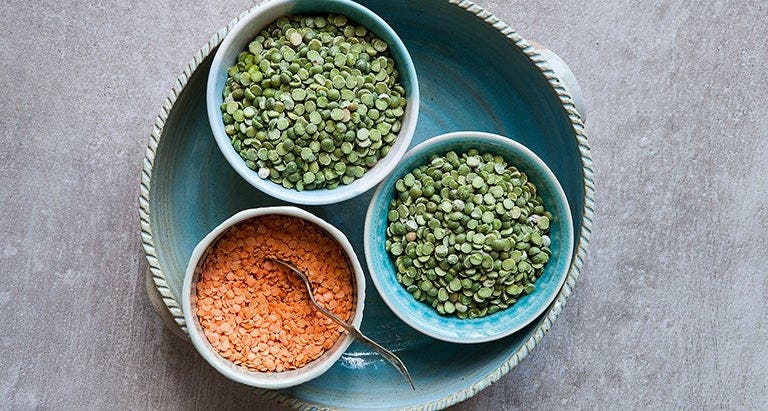Most Valuable Ingredient: Lentils


Lentils are small, but they pack a huge nutritional punch: They’re among the best plant sources of iron; a very good source of filling, cholesterol-lowering fiber; and a good source of protein. They also offer good to excellent amounts of two B-vitamins and six key minerals.
Types of lentils
Lentils come in a rainbow of colors:
- Brown (sometimes labeled green — they’re khaki colored, really, they're the easiest to find)
- French green (also known as Lentils du Puy, they’re the most elegant — and the most expensive)
- Red (more of a salmon shade, they turn golden when cooked)
- Black (sometimes called Beluga, since they resemble caviar)
When buying lentils...
Prices range from under a dollar up to $10 a pound, with brown being the least expensive and French green costing the most.
One pound dried yields from five to seven cups of cooked lentils, so even the pricier varieties are still a bargain.
Make sure they’re a uniform color, firm, smooth, and dry. If you’re buying in bulk — often the cheapest option — make sure the lids are covered and that the store has a bustling turnover. Lentils don’t go bad, but older ones take longer to cook. For this reason, don’t mix newly purchased lentils with those you already have — their cooking times may be different.
Store dried lentils in a cool, dry place. Like age, exposure to heat and humidity makes them harder to cook. Keep cooked lentils in the refrigerator for up to five days.
How to use lentils
Before you start cooking, spread the lentils out on a light-color surface and remove any pebbles, debris, or damaged lentils. Put into a colander and rinse under cold water.
Unlike most dried beans, lentils require no pre-soaking, and they cook quickly — if you put on a pot when you come home from work, dinner should be ready in under an hour. Cooking time will depend on your planned use, as well as the age of the lentils themselves — for most varieties, it could be as little as 20 minutes.
To use in salads, where you’ll want them to retain their shape, start testing at the 18-minute mark and drain as soon as they’re tender — they’ll turn to mush if left in the hot liquid.
For soups and stews, cook them 10 minutes longer, and for purees longer still. Red lentils, which have been hulled, are a faster-cooking variety; they’re done in as little as 6 to 12 minutes. Don’t expect to use them in salads, though: Red lentils turn creamy quickly, and are best reserved for purees and soups.
Because acid slows lentils’ absorption of liquid, add tomatoes, wine, and other acidic ingredients towards the end of cooking time, or simply plan for cooking to take longer.
RELATED: A Dozen Things to Do with Lentils
